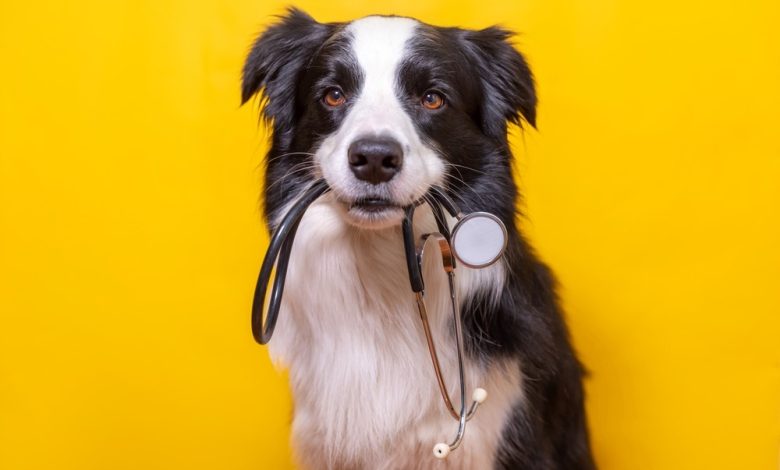Don’t Ignore 5 Vital Signs About Your Dog’s Health


Dogs are just like human kids as they constantly need attention and care from adult humans. Similarly, dogs are not immune to diseases as they can also get sick, but as a responsible adult, the dog’s owner must keep a proper check on their health.
Just like when we get sick, we show various symptoms! Similarly, dogs also show some vital signs, such as fluctuating temperatures and breathing rating, that shouldn’t be ignored. Let’s look at 5 vital signs of your dog’s health that should not be ignored.
Body Temperature
One key aspect of your dog’s health that should never be overlooked is their body temperature. It is a vital sign that can tell much about your dog’s health. Now you might be wondering, what is the right or normal temperature for a Goldendoodle full grown or any other dog?
Generally speaking, the normal body temperature of a dog lies between 101°F and 102.5°F. So, if the temperature of your furry friend is outside this range, it could be a sign that something is wrong.
How to Check Your Dog’s Body Temperature
Always have an ear or rectal thermometer at home specifically designed for dogs. It is a great idea to check your dog’s temperature to see if it’s shivering, vomiting, or is out of energy. To do this, follow these steps;
- Make sure that the thermometer is clean and dry before you use it.
- After ensuring everything’s okay, insert the thermometer in the dog’s ear canal (following the manufacturer’s instructions) if you’re using an ear thermometer.
- Then wait a few seconds to get the readings and keep your dog still.
- Once you’re done, carefully remove the thermometer and check the readings.
Note: After using a thermometer, clean it properly according to the instructions usually provided with the package. Then dry it thoroughly and store it in a safe place.
Reasons for Irregular Body Temperature
If the readings of the thermometer are raising an alarm i.e. if it’s more or less than the optimum temperature, then you should be worried. As we mentioned, there are two possible situations; either the temperature would be low or high. If it’s low, then it’s known as Hypothermia.
Here are a few reasons that might have caused the low temperature;
- Dogs that have undergone anesthesia experience a drop in temperature.
- Some medical conditions might have lowered the temperature, which can be confirmed by the Vet.
- The dog might have been exposed to cold weather or water for a long period of time.
On the other hand, the condition where your dog has a high temperature is known as hyperthermia. Here are some of the common causes that might have caused it in your dog;
- Like humans, a bacterial or viral infection can cause the temperature to rise in dogs.
- Inflammation from a wound or surgery can also cause this condition.
- Heatstroke is a major cause of high temperature, which occurs when a dog is exposed to hot weather for a long time.
Heart Rate
Change in the heart rate is a major issue that can indicate underlying health problems that may need your attention. According to Red Cross, here’s the normal heart rate of different dogs;
- Small Dog – 120-160 beats per minute
- Medium to Large Dog – 60-100 beats per minute
But if the heart rate is not within this range, then you must look out for taking some actions. An irregular heartbeat might indicate anxiety, dehydration, heat stroke, or heart disease. So, it is a good idea to check the heart rate, and if anything seems wrong, book an appointment with your veterinarian immediately.
How to Find the Heart Rate of Your Dog?
You can check it through the pulse method. But instead of finding a vein on its paws, it’s a good idea to check it on the inside of the thigh or the chest behind the elbow. You can also use a stethoscope for this. But whichever method you use, be gentle if you don’t want to slow down the heartbeat.
Respiratory Rate
Many people confuse the heart rate with the respiratory rate, which is wrong because both are completely different. The heart rate means the number of times a heart beats per minute, while the respiratory rate means the number of breaths per minute a dog takes.
According to BEVS, the normal respiratory rate for dogs is 10-30 breaths per minute. However, it can vary depending on your dog’s size, age, and breed. Respiratory rate changes due to heat stroke, excitement, illness, pain, stress, or respiratory infection, so if you see any serious change, check it with the doctor.
How to Find the Respiratory Rate of a Dog
Checking the respiratory rate of a dog is the simplest task! You have to count the number of breaths they take per minute. But make sure that the dog is in a relaxed position while doing so.
Appetite
A dog’s appetite depends on age, breed, size, and many other factors, but you should be alarmed if it stops eating suddenly. For this, you need to observe your dog’s eating habits to understand what is normal for your dog. Here are the two things you can observe to get started;
- Amount of food consumed
- Frequency of the meals taken
Once familiar with their eating habits, it would be easy to notice the small changes pointing toward a big issue. Most of the time, the decrease in appetite of a dog is caused by stress, dental, or digestive issues.
But the, serious appetite problems are usually caused by more complex medical conditions. However, both may cause dehydration, weight loss/gain, or nutrient deficiencies/overtake. Therefore, if you observe a problem with your dog’s eating habits, discuss it with a professional vet.
Energy Level
The energy level of a dog can vary greatly. So, one day, your dog might bounce off the walls, while they might be lazy the next. So, observing energy levels can get difficult but not impossible.
Observing every level of a dog is similar to observing its appetite, which was mentioned above. You would have to observe their activity levels throughout the day. Once you’ve mastered this, you can note the changes instantly, saving you from a lot of trouble in the future.
Conclusion
All in all, dogs are – undoubtedly – cute and loyal, but they require your full attention. So, if you are ready to become an adult and take on the responsibilities, you must learn to notice the changes – even the smaller ones.
If you observe any vital signs that are ringing again and again to get your attention, then don’t ignore them. These vital signs include energy level, appetite, respiratory rate, heart rate, and body temperature. And always remember that if you ever observe some concerning signs about your dog’s health, get them checked by a veterinarian immediately.





